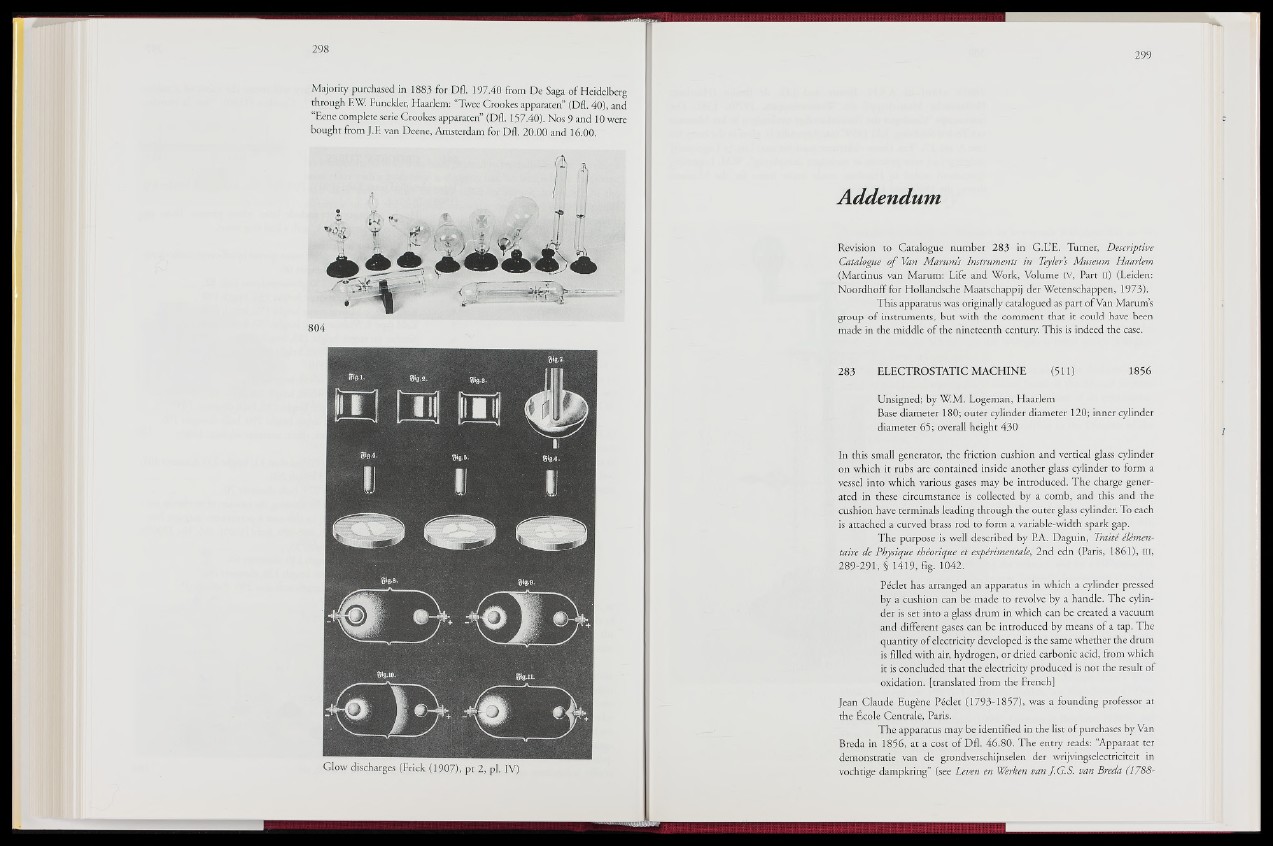
Majority purchased in 1883 for Dfl. 197.40 from De Saga of Heidelberg
through F.W. Funckler, Haarlem: “Twee Crookes apparaten” (Dfl. 40), and
“Eene complete serie Crookes apparaten” (Dfl. 157.40). Nos 9 and 10 were
bought from J.F. van Deene, Amsterdam for Dfl. 20.00 and 16.00.
Glow discharges (Frick (1907), pt 2, pl. IV)
Addendum
Revision to Catalogue number 283 in G.L’E. Turner, Descriptive
Catalogue o f Van Marums Instruments in Teylers Museum Haarlem
(Martinus van Marum: Life and Work, Volume IV, Part II) (Leiden:
Noordhoff for Hollandsche Maatschappij der Wetenschappen, 1973).
This apparatus was originally catalogued as part of Van Marums
group of instruments, but with the comment that it could have been
made in the middle of the nineteenth century. This is indeed the case.
283 ELECTROSTATIC MACHINE (511) 1856
Unsigned; by W.M. Logeman, Haarlem
Base diameter 180; outer cylinder diameter 120; inner cylinder
diameter 65; overall height 430
In this small generator, the friction cushion and vertical glass cylinder
on which it rubs are contained inside another glass cylinder to form a
vessel into which various gases may be introduced. The charge generated
in these circumstance is collected by a comb, and this and the
cushion have terminals leading through the outer glass cylinder. To each
is attached a curved brass rod to form a variable-width spark gap.
The purpose is well described by P.A. Daguin, Traité élémentaire
de Physique théorique et expérimentale, 2nd edn (Paris, 1861), III,
289-291, § 1419, fig. 1042.
Péçlet has arranged an apparatus in which a cylinder pressed
by a cushion can be made to revolve by a handle. The cylinder
is set into a glass drum in which can be created a vacuum
and different gases can be introduced by means of a tap. The
quantity of electricity developed is the same whether the drum
is filled with air, hydrogen, or dried carbonic acid, from which
it is concluded that the electricity produced is not the result of
oxidation, [translated from the French]
Jean Claude Eugène Péclet (1793-1857), was a founding professor at
the Ecole Centrale, Paris.
The apparatus may be identified in the list of purchases by Van
Breda in 1856, at a cost of Dfl. 46.80. The entry reads: “Apparaat ter
demonstratie van de grondverschijnselen der wrijvingselectriciteit in
vochtige dampkring” (see Leven en Werken van J.G.S. van Breda (1788-